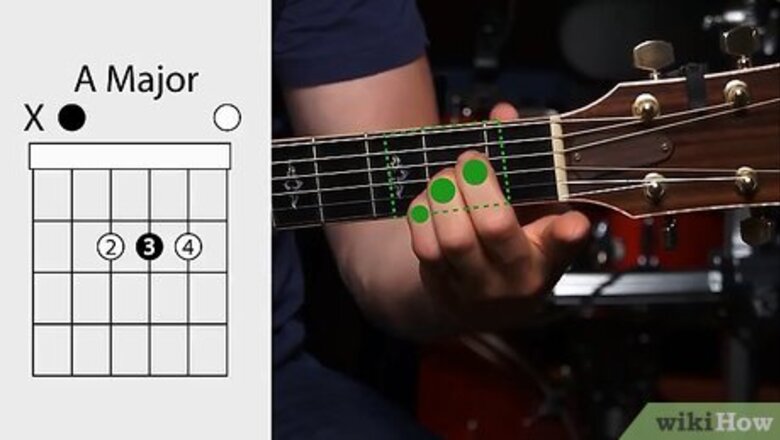
views
Playing an Open A
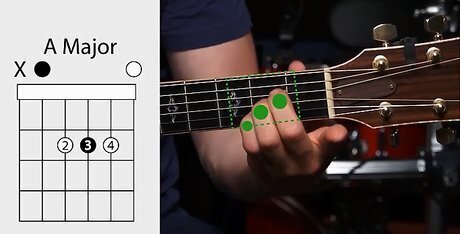
Know that an A requires 3 different fingers on three different strings. For A Major (or simply "A"), you strum every string but the topmost one. A basic A Major chord is simply a straight line with your pointer, middle, and ring fingers on the 2nd fret, playing the 2nd, 3rd, and 4th strings from the bottom. Looking down at the guitar in your lap and starting with the thickest string: Leave the top string "open," which means there is no finger on the fret. Leave the next string open as well Place your pointer finger on the next string between the first and second fret. The first fret is the one closest to the head of the guitar. Place your middle finger between the first and second fret. Place your ring finger between the first and second fret. Leave the bottom most (high E) string open.
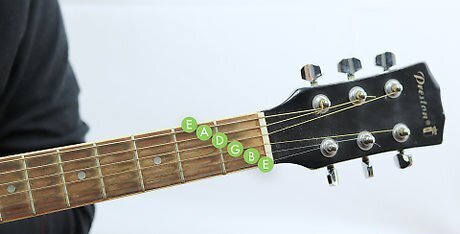
Learn the notes of the guitar to find an A Major even easier. Guitar strings are not numbered from the top down. The bottom string, which is the thinnest string on your guitar, is the 1st string. The next one up is the 2nd, and so on until you get to the 6th string, the heaviest one. A helpful mnemonic for the order of the strings is Every Boy Gets Dinner At Eight, since the strings, from the bottom up, are EBGDAE. The 1st string, the thinnest, is the High E. The 2nd string is a B. The 3rd string is a G. The 4th string is a D. The 5th string is an A. The 6th string, the thickest, is the Low E.
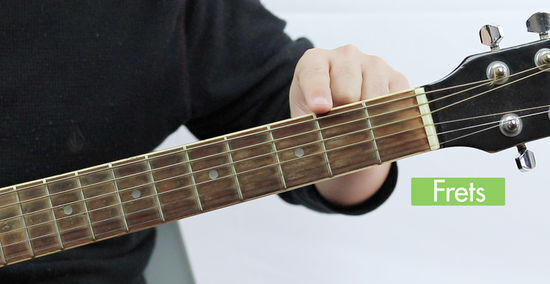
Understand fretting. Frets are the little metallic bars along the neck of the guitar. Pushing down a string in between two frets changes the note of the string, and each fret marks out the intervals between changing notes. The 1st fret is closest to the head of the guitar, the small piece at the end of the neck where all the strings are tied to the tuners. If a song calls for a note on the 1st fret, you would put your finger down in the space between the head and the first fret. If it calls for a note on the 2nd sting, 5th fret, you place you finger in the space between the 4th and 5th fret, on the 2nd string. Each fret represents a half-step, musically. So the 6th string (top string), 4th fret is a G# (sharp), the 5th fret an A, the 6th an A sharp, etc. Try and place your finger close to the fret for the best tone. For example, if you want to play a note on the 2nd fret, try and keep your finger as close to the second fret as possible without crossing over it or being on top of the fret. You are still between the 1st and 2nd fret, just closer to the 2nd. Tableture is guitar's version of sheet music, and simply uses the number of the fret instead of notes. It is incredibly helpful to learn if you want to learn the frets.

Leave the top two strings open to play an A major. You will try not to play the 6th string at all. The 5th string, when left open, is already an A note, so you want it in your chord. Remember, the 5th and 6th strings are the top two strings.
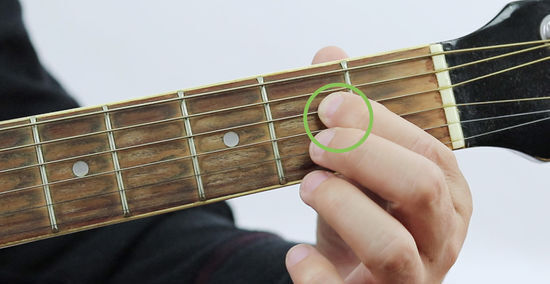
Place your pointer finger on the 2nd fret of the 4th string. This note is an E. Chords are not made up of all the same note. They are made up, instead, of several tones that come together to make a richer, fuller sounding chord.
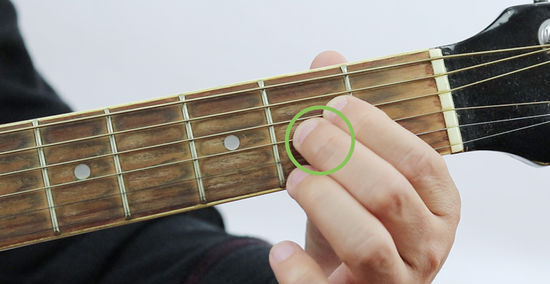
Place your middle finger on the 2nd fret of the 3rd string. This note is another A, but it is one octave (same note, but a different frequency) higher. Think of two singers, male and female, singing the same note at different tones, to get a beautiful harmony, and you'll understand octaves. For now, just know you need it in your chord.
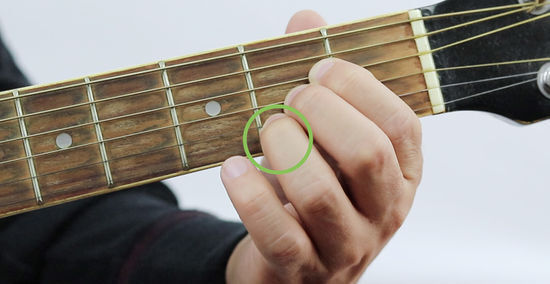
Place your ring finger on the 2nd fret of the 2nd string. When done, you should have your three fingers in a line on the second fret.This note is a C#. It is included because C# is the 3rd note of the A major scale, though this is not important for beginners to remember.
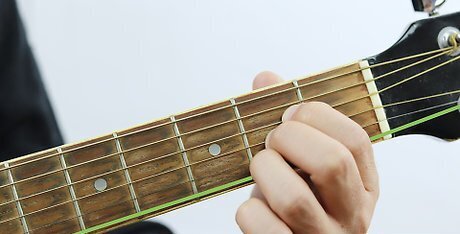
Leave the 1st, lowest string open. This is another E, one octave higher than the E you are playing on the 4th string, and it rounds out the chord nicely. Music Theory Note: E is the 5th note of the A Major scale. All major chords are made up of the 1st, 2nd, and 3rd notes of a major scale. Thus, an A chord is nothing but A, E, and C#.
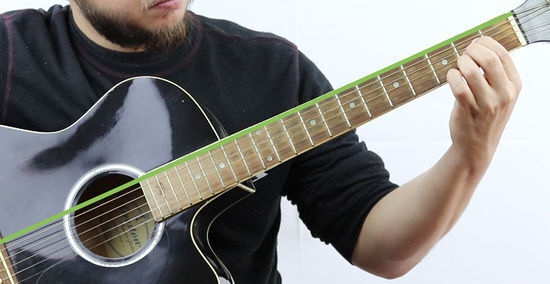
Strum down the bottom five strings. Try not to play the thick, heavy 6th string on the top. This is your basic A major chord, known also as an Open A. If you are having trouble making it sound clean: Practice curving your fretting fingers upwards so that the pads on your fingers don't drag on other strings and muffle them. Press down firmly with the tip of your fingers. It may hurt for the first 2-3 days, but your fingers will quickly adapt. Make sure you are close enough to the fret. At the very least, keep your fingers 3/4 of the way from the 1st fret to the 2nd.
Playing an A Major Barre Chord
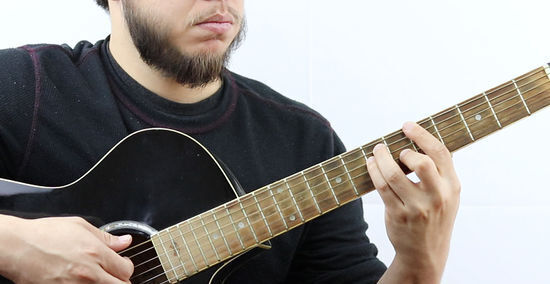
Know that barre chords are quickly changeable, adjustable chords found up and down the neck. A barre chord, called such because you "bar" your index/pointer finger flatly across 5-6 strings at once, is used in many songs because you can move it quickly up and down the neck to get new chords. The chord is named after the topmost note that you play, which is also where you bar your finger. Since the 5th fret on the 6th string is an A, you start there for your A Major chord.

Place your entire finger over every string on the 5th fret. This is your bar. Start with the top of your index finger pushing down on the 5th fret on the 6th string, which is the heavy string on top of the neck. Lay your finger down across every string so that all of them sound like you were playing on the 5th fret. Pluck each string to practice your bar. You should hear a clear note all the way down the neck.
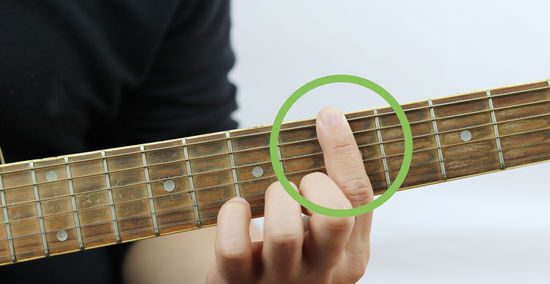
Leave the 6th string barred. The 5th fret of this string is an A, and it forms the basis of your chord. Leave it barred and move to the next string.
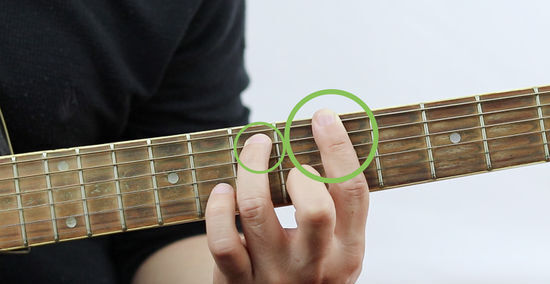
Place your ring finger on the 7th fret of the 5th string. Keep your bar solid, and place your ring finger two frets down on the 7th. You will be on the second highest string from the top. This is an E.
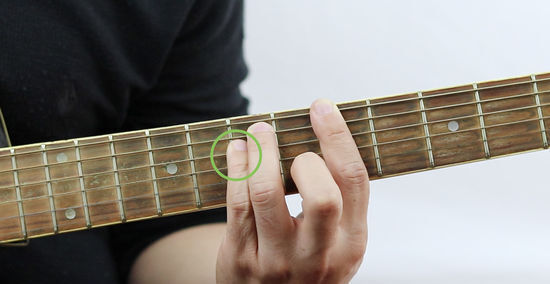
Place your pinky on 7th fret of the 4th string. One more string down, you'll need to stretch your pinky to cover up the 7th fret right beneath your ring finger. This note is an A. Place your middle finger on the 6th fret of the 3rd string. The last note you need to grab is the C#, just one fret away from your bar, on the 3rd string. If you've played an Open E chord, you'll recognize this as the same structure for your fingers. This is why this form is often called an "E Form Barre Chord."
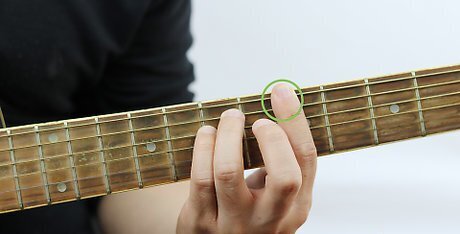
Leave the 2nd and 1st strings barred on the 5th fret. This is where practice and finger strength will come in handy. You pointer should press firmly enough into the bottom two stings that you hear them on the 5th fret. Don't worry if you don't get it at first, your hands will soon adapt.
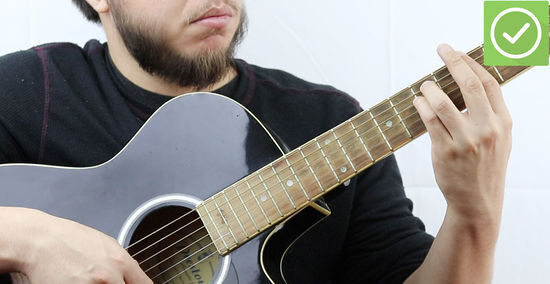
Strum all 6 strings. You can play ever single note on an E-form barre chord, which makes it very versatile up and down the neck. For harder-rocking songs, like punk, you can adapt the chord to play it faster by only strumming the top three strings (6th, 5th, 4th). This is called a "power chord."
Variations (Am, A7, and Am7)
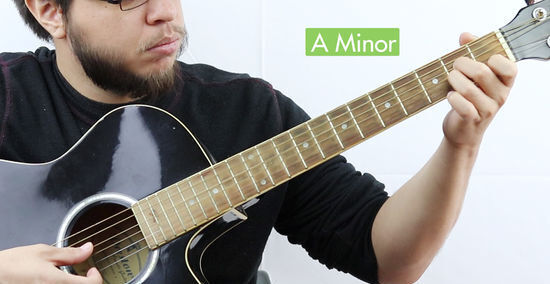
Learn to play an A Minor. This chord sounds a little bit darker, and some say sadder, than its major cousin, but is equally easy to play. The variation changes depending on if you are playing Open or Barre chords. A Minor is usually abbreviated as "Am." Open Am: This is the same shape as the one use in an A major barre chord, except you don't need to use your pointer to bar anything. Remember that the 1st string is the thin, lowest string on the bottom. 1st String -- Open. 2nd String -- Pointer finger on 1st fret. 3rd String -- Ring finger on 2nd fret. 4th String -- Middle finger on the 2nd fret. 5th String -- Open. 6th String -- Open. Am Barre Chord: Take your normal A Major Barre Chord and pick up your middle finger, leaving just the bar on the 5th fret and two fingers on the 7th fret. 1st String -- Bar on 5th fret. 2nd String -- Ring finger on 7th fret. 3rd String -- Pinky on 7th fret. 4th String -- Bar on 5th fret. 5th String -- Bar on 5th fret. 6th String -- Bar on 5th fret.
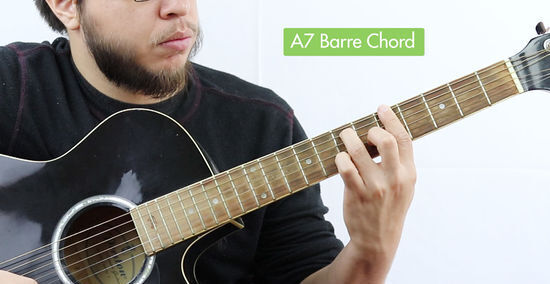
Learn to play an A 7th. Seventh chords are melodic and bluesy, and are used in a variety of rock, blues, and R&B songs. They are also easily adapted from Open and Barre chords. Often written as "A7." Open A7: Take your normal A Major chord, but this time you should leave the 3rd string open. 1st String -- Open. 2nd String -- Ring finger on 2st fret. 3rd String -- Open. 4th String -- Pointer finger on the 2nd fret. 5th String -- Open. 6th String -- Open. A7 Barre Chord: Take your normal A Major Barre Chord and pick up your pinky, leaving the bar on the 5th fret, your middle finger on the 6th fret, and your ring finger on the 7th fret. 1st String -- Bar on 5th fret. 2nd String -- Ring finger on 7th fret. 3rd String -- Bar on the 5th fret. 4th String -- Middle finger on 6th fret. 5th String -- Bar on 5th fret. 6th String -- Bar on 5th fret.
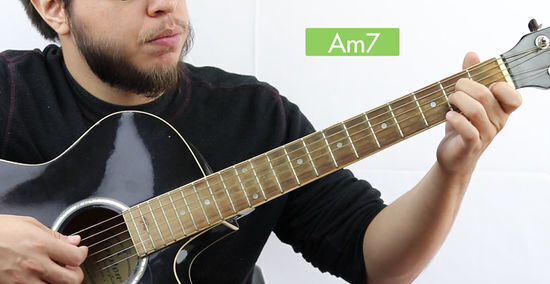
Learn to play an A Minor 7th. This dark, bluesy, and sparse chord is usually in brooding, slower songs. Because there is not a lot of fretting needed, it is pretty easy to play. Often written as "Am7." Open Am7: This is the same structure as an A7 barre chord, just one string lower and moved up the neck. 1st String -- Open. 2nd String -- Middle finger on 2st fret. 3rd String -- Open. 4th String -- Pointer finger on the 1st fret. 5th String -- Open. 6th String -- Open. Am7 Barre Chord: Take your normal A Major Barre Chord and pick up your pinky and middle finger, leaving just the bar on the 5th fret and your ring finger on the 7th fret. 1st String -- Bar on 5th fret. 2nd String -- Ring finger on 7th fret. 3rd String -- Bar on the 5th fret. 4th String -- Bar on the 5th fret. 5th String -- Bar on 5th fret. 6th String -- Bar on 5th fret.
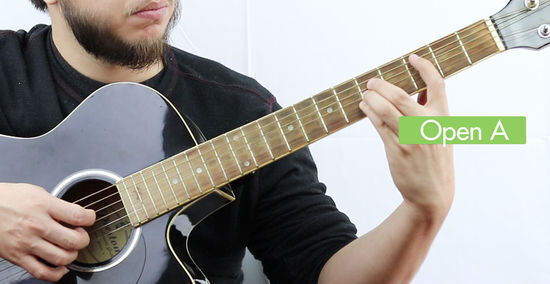
Recognize that an Open A is actually a hidden barre chord. You don't have to bar all of the strings, however, because they are open. This means that you can play a much higher pitched version of the chord as a barre chord further down the neck. At the 12th fret, all of the open notes repeat, so the 1st string/12th fret is an E, 2nd string/12th fret is a B, 3rd string/12th fret a G, etc. Thus, by barring your pointer finger over the 12th fret and using your ring finger to bar the 14th fret you get an A Major chord that is bright and high. You may have to sacrifice the 1st string, 12th fret E to make this work, as it is hard to bar the 2nd, 3rd, and 4th strings at once and still leave the 1st string uncovered. All of the variations mentioned for Open A chords apply as well, as long as you add 12 frets to each diagram (open strings, or 0 fret, → 12th fret, 2nd → 14th, etc.).

















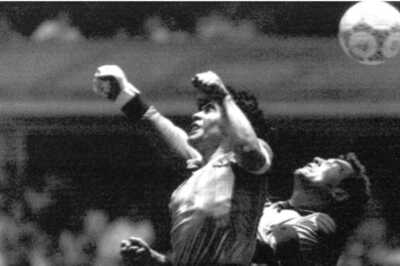

Comments
0 comment